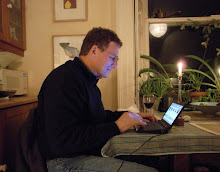 Around the turn of the century, the last century that is, the Cornish art colony in upper New Hampshire thrived. About eighty artists and notables were associated with this retreat, which was more or less organized by the sculptor Augustus Saint-Gaudens and the painter Thomas Wilmer Dewing. First artists and architects, next writers, and then other talented and accomplished people, along with the merely wealthy, took up residence in and around Cornish and Plainfield, New Hampshire, for either the summers or year round. The list of colonists include Maxfield Parrish, Ethel Barrymore, Marie Dressler, Isadora Duncan, Frederic Remington, Daniel Chester French (sculptor of the Lincoln Memorial), legendary editor Maxwell Perkins, Judge Learned Hand, and President Woodrow Wilson.
Around the turn of the century, the last century that is, the Cornish art colony in upper New Hampshire thrived. About eighty artists and notables were associated with this retreat, which was more or less organized by the sculptor Augustus Saint-Gaudens and the painter Thomas Wilmer Dewing. First artists and architects, next writers, and then other talented and accomplished people, along with the merely wealthy, took up residence in and around Cornish and Plainfield, New Hampshire, for either the summers or year round. The list of colonists include Maxfield Parrish, Ethel Barrymore, Marie Dressler, Isadora Duncan, Frederic Remington, Daniel Chester French (sculptor of the Lincoln Memorial), legendary editor Maxwell Perkins, Judge Learned Hand, and President Woodrow Wilson.These were not starving artists. Their presence revived the economy of this formerly hardscrabble farming area. Many built stunning residences with formal gardens, including ten designed by colonist Charles A. Platt that show Georgian and Italian Renaissance influences. Others remodeled existing farmhouses in high style.
I'm curious about how active and inclusive their social gatherings were. It was never a teaching colony, but they must have held parties and picnics, gallery openings, lectures, concerts, and the like. Was Jewish sculptor William Zorach always invited? I'm sure there were also intrigues, liaisons, fallings-out, rivalries, and many drinking bouts. Perhaps there's a historical novel lying in wait for a writer willing to do the research.
This painting, Symphony in Green and Gold by Thomas Wilmer Dewing, 1900, was inspired by one of the colony's amateur theatricals, staged in a garden and illuminated by Chinese lanterns. If I have any fantasy about living in such a colony, it is of being culturally self-sufficient, participating in do-it-yourself entertainments alongside creative people. Click on the picture for a closer look.



